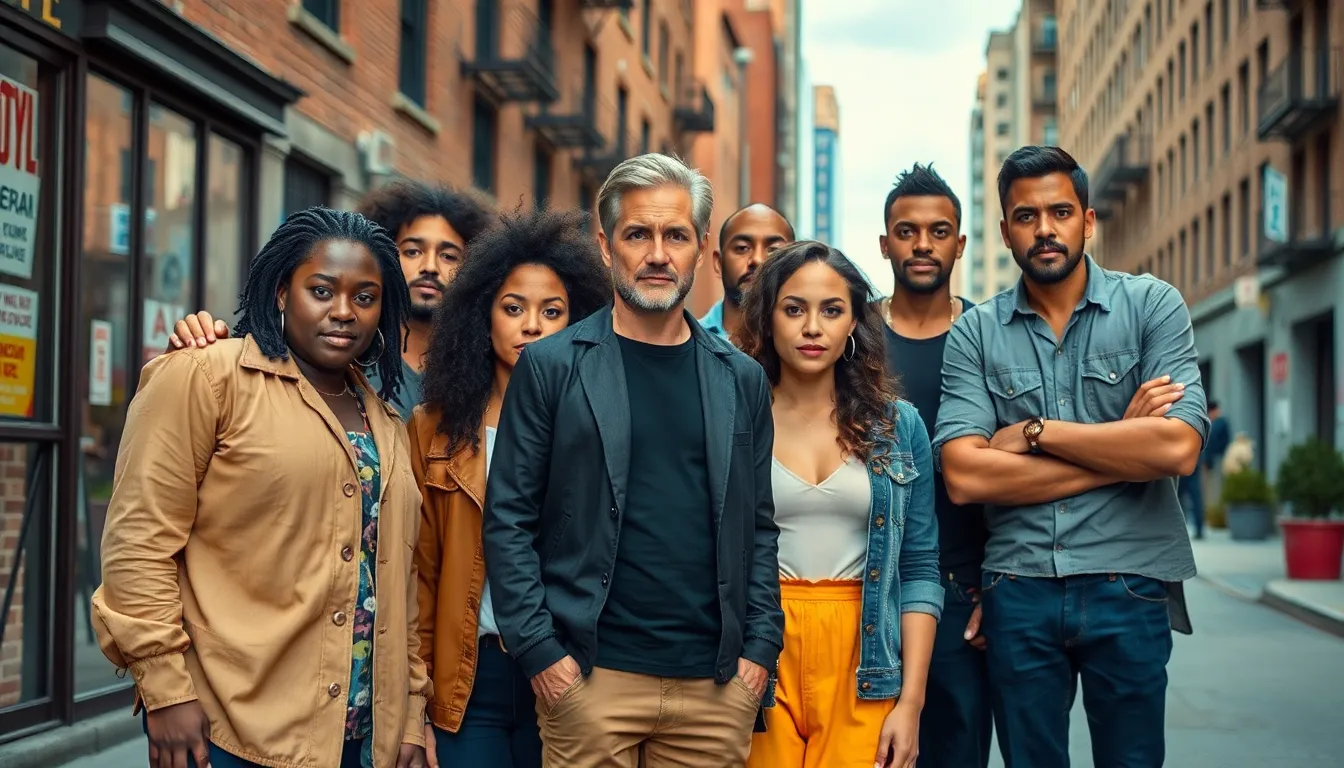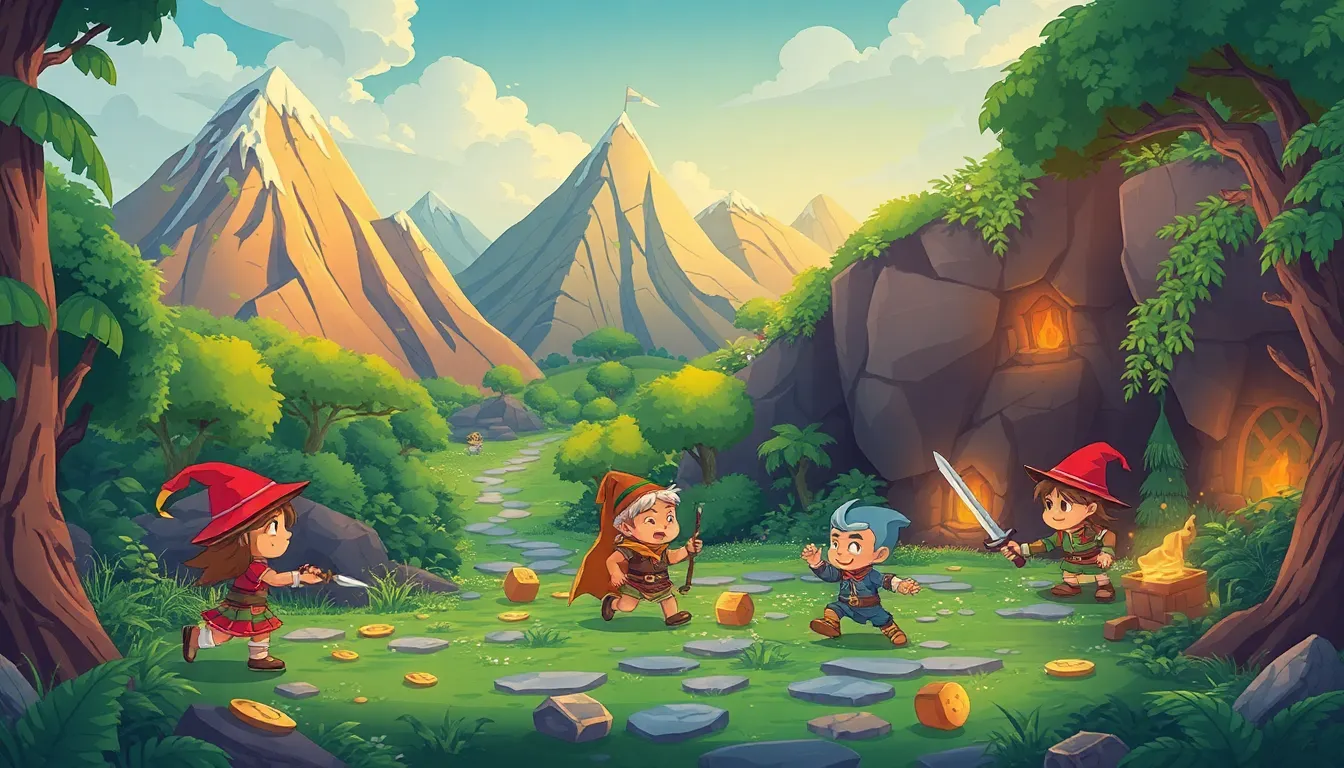Ensemble casts are like the ultimate party where everyone’s invited, and the fun never stops. Picture a vibrant mix of personalities, each adding their unique flavor to the story. From the lovable goofball to the brooding genius, these characters create a dynamic synergy that keeps audiences glued to their screens.
In a world where solo acts often steal the spotlight, ensemble casts prove that teamwork makes the dream work. They masterfully juggle multiple storylines, offering viewers a delightful buffet of emotions and experiences. Whether it’s a blockbuster film or a binge-worthy series, the magic of ensemble casts lies in their ability to make every character feel like a star. So, grab your popcorn and settle in—this article will dive into why these talented troupes are the heartbeat of modern storytelling.
Table of Contents
ToggleUnderstanding Ensemble Casts
Ensemble casts comprise multiple characters who contribute significantly to a narrative. Each member brings unique attributes that enrich storytelling. Their interactions create dynamic relationships, enhancing drama and humor. Writers often craft intertwining plot lines to give each character a chance to shine, ensuring no single role overshadows the others.
Many successful films and series utilize ensemble casts to explore diverse themes and perspectives. Characters can represent various backgrounds, occupations, and motivations. This diversity allows for a broader examination of contemporary issues, resonating with wider audiences. Popular examples include “Game of Thrones,” where distinct arcs and conflicts stem from a large ensemble.
Audiences appreciate ensemble casts for the emotional complexities they introduce. Through multiple viewpoints, viewers experience a range of emotions—from joy to heartbreak. Additionally, when one character faces adversity, the collective response from others highlights underlying themes of friendship and loyalty. Such depth captures audience attention, creating a memorable viewing experience.
Directing an ensemble cast involves balancing screen time effectively. Each character must feel significant while maintaining the story’s flow. Editors play vital roles in shaping the narrative, choosing moments that emphasize key relationships and character development. This collaboration between writers, directors, and editors ensures that ensemble casts fulfill their potential in storytelling.
Critics often highlight the risk of character overload in ensemble casts. While too many characters can dilute focus, skilled writers manage this by crafting distinct, relatable personas. Providing depth to each character enhances the overall engagement, making the storytelling richer and more enjoyable for viewers.
Characteristics of Ensemble Casts

Ensemble casts exhibit several defining traits that contribute to their compelling narratives. Notable characteristics include balanced screen time and diverse character arcs.
Balanced Screen Time
Balanced screen time proves essential for engaging ensemble casts. Effective storytelling allows each character to shine without overwhelming the audience. Directors prioritize each character’s presence, ensuring that their unique attributes are highlighted. This attention to balance fosters connections among characters, enriching the narrative flow. Audiences find it rewarding when all characters receive adequate development, allowing for moments of individual growth and interaction. Careful editing plays a vital role in maintaining this balance by ensuring clarity and coherence across multiple storylines.
Diverse Character Arcs
Diverse character arcs enhance the richness of ensemble casts. Each character brings a distinct journey that reflects a range of experiences and emotions. Writers craft intricate backstories, allowing individuals to evolve alongside the central plot. This complexity results in varied perspectives on universal themes such as love, conflict, and friendship. Audiences appreciate witnessing characters overcome challenges, adding depth to their interactions. Compelling character arcs often intersect, creating tension and synergy that keep viewers engaged throughout the narrative.
Benefits of Ensemble Casts
Ensemble casts contribute significantly to storytelling, enriching narratives through diverse characters and interactions. Their dynamics create complex relationships that heighten emotional stakes and engage viewers on multiple levels.
Enhanced Storytelling
Enhanced storytelling emerges from the variety of perspectives an ensemble cast offers. Characters with distinct backgrounds and motivations intersect, weaving intricate plotlines that reflect real-life complexities. Different viewpoints allow for a multifaceted exploration of themes, such as love, conflict, and redemption, keeping narratives fresh. Each character’s journey adds depth, allowing audiences to connect with a broader spectrum of human experience. Films like “Pulp Fiction” exemplify this, weaving interlinked stories into a cohesive, compelling whole. This narrative richness fosters deeper audience investment, allowing stories to resonate meaningfully.
Audience Engagement
Audience engagement heightens when ensemble casts present multiple relatable characters. Viewers find themselves invested in various arcs, often connecting with different characters based on personal experiences. The emotional range showcased across multiple storylines cultivates an immersive viewing experience. Engaging dialogue and interactions create memorable moments, prompting discussions beyond the screen. Series such as “The Office” illustrate this, as fans develop attachments to numerous characters while navigating humor and drama together. Effective use of ensemble casts increases audience loyalty, resulting in stronger viewer retention and word-of-mouth promotion for films and series.
Notable Examples of Ensemble Casts
Numerous films and television series prominently showcase ensemble casts, demonstrating their effectiveness in storytelling. Each example reveals different strengths and narratives that elevate the overall experience.
Film Examples
“Avengers: Endgame” illustrates the power of ensemble casting with its blend of superheroes, each contributing to a unified mission. Characters like Iron Man and Captain America drive the plot, but the diverse traits of supporting heroes enrich the drama. “Pulp Fiction” stands out for its non-linear storytelling and interconnected character arcs, captivating audiences with its dynamic interactions. Furthermore, “The Lord of the Rings” films offer a rich tapestry of personalities, with each character’s journey resonating on multiple levels, from friendship to sacrifice.
Television Examples
“Game of Thrones” showcases an extensive ensemble, featuring complex characters from various backgrounds, each with distinct motivations and conflicts. Viewers become deeply invested in relationships like that of Jon Snow and Daenerys Targaryen, which adds depth to the overarching narrative. “Friends” exemplifies how an ensemble cast can balance humor and heartfelt moments, consistently engaging audiences through the camaraderie of its six main characters. Additionally, “The Office” employs a diverse ensemble to create relatable experiences, highlighting everyday life in the workplace while sparking viewer loyalty through memorable quotes and situations.
Challenges of Ensemble Casts
Ensemble casts present unique challenges in storytelling. Understanding these obstacles helps creators effectively manage their diverse characters.
Coordination and Direction
Directors face the significant challenge of coordinating multiple personalities. Each character demands attention in various scenes, making it essential to maintain a cohesive narrative. Approaches vary; some directors employ extensive rehearsals to create chemistry among actors. Communication between cast members also plays a pivotal role, ensuring that interactions resonate authentically. Successful filmmakers often utilize detailed storyboards to capture the essence of each character’s journey while preserving continuity. A well-planned production schedule mitigates potential issues related to time constraints, enhancing overall performance.
Character Development
Character development presents another substantial hurdle for ensemble casts. Writers must craft distinctive arcs that resonate with audiences yet remain interconnected. Individual backstories contribute to each character’s depth, fostering viewer investment. It’s vital to avoid overshadowing any single character while ensuring that all narratives progress meaningfully. Strong character relationships enhance the dynamics within the story, complicating interactions and driving emotional engagement. Prioritizing character growth across the ensemble enhances the richness of the narrative, allowing diverse themes to unfold seamlessly throughout the plot.
Ensemble casts play a vital role in modern storytelling by weaving together diverse characters and their unique journeys. This dynamic approach not only enriches the narrative but also fosters deeper emotional connections with audiences. As viewers engage with multiple perspectives they experience a broader range of themes and emotions.
The careful balance of screen time and character development ensures that each persona contributes meaningfully to the story. Despite the challenges that come with managing an ensemble cast skilled writers and directors can create captivating narratives that resonate with viewers. The lasting impact of ensemble casts is evident in their ability to bring complex stories to life making them an essential element in both film and television.




